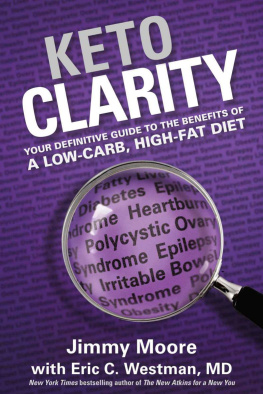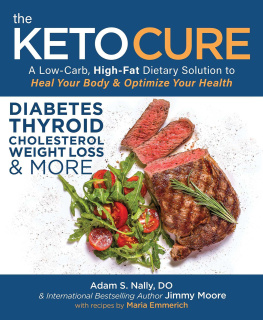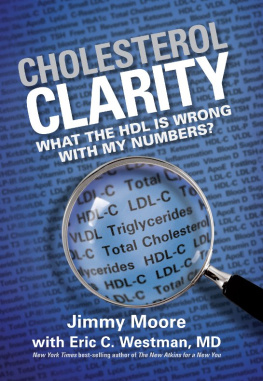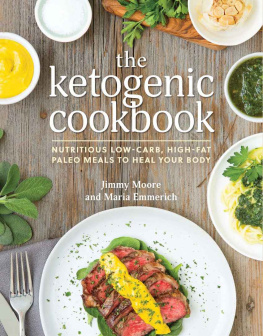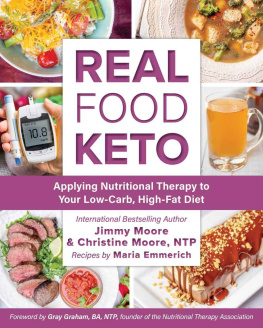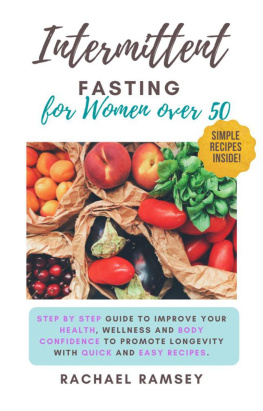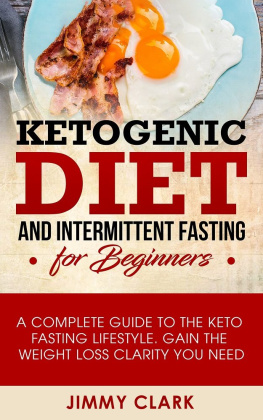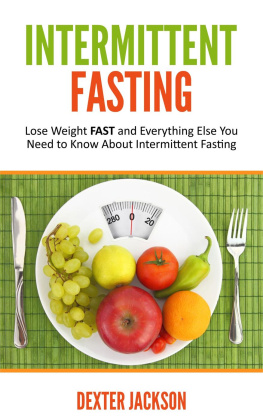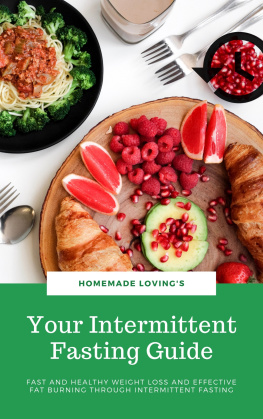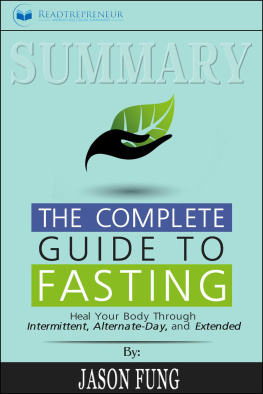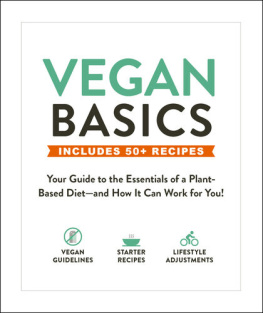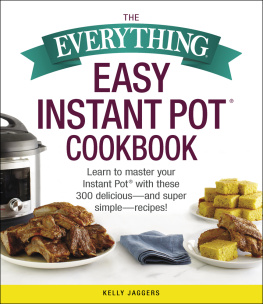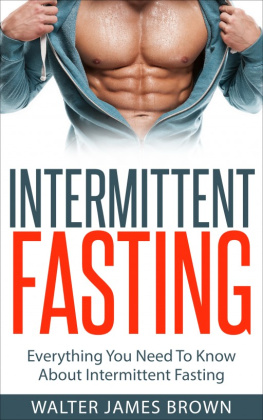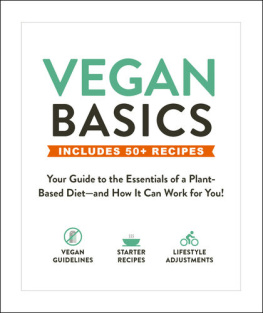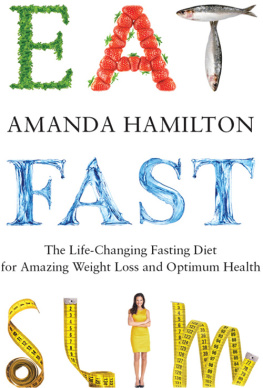First Published in 2016 by Victory Belt Publishing Inc.
Copyright 2016 Dr. Jason Fung & Jimmy Moore
All rights reserved
No part of this publication may be reproduced or distributed in any form or by any means, electronic or mechanical, or stored in a database or retrieval system, without prior written permission from the publisher.
ISBN 13: 978-16-28600-01-8
The information included in this book is for educational purposes only. It is not intended or implied to be a substitute for professional medical advice. The reader should always consult his or her health-care provider to determine the appropriateness of the information for his or her own situation or if he or she has any questions regarding a medical condition or treatment plan. Reading the information in this book does not create a physician-patient relationship.
Victory Belt is a registered trademark of Victory Belt Publishing Inc.
Book design by Justin-Aaron Velasco
Illustrations by Justin-Aaron Velasco
Food photography (recipes) by Tom Estrera
Food preparation and styling by Luzviminda Estrera
Printed in Canada
TC0116
CONTENTS
INTRODUCTION
by Jason Fung, MD
I grew up in Toronto, Canada, and studied biochemistry at the University of Toronto, where I also completed medical school and my residency in internal medicine.
After my residency, I chose to study nephrology (kidney disease) at the University of California, Los Angeles, mostly at Cedars-Sinai Medical Center and West Los Angeles VA Medical Centers (then known as the VA Wadsworth). Each field of internal medicine draws its own personalities, and nephrology has the reputation of being a thinkers specialty. Kidney disease involves intricate fluid and electrolyte problems, and I enjoy these puzzles. In 2001 I returned to Toronto to start my career as a nephrologist.
Type 2 diabetes is far and away the leading cause of kidney disease, and I treat many hundreds of patients with this disease. Most type 2 diabetics also suffer from obesity. By the early 2010s my interest in puzzles, combined with my professional focus on obesity and type 2 diabetes, had led me to focus on diet and nutrition.
How did I go from preaching conventional medicine to prescribing intensive dietary strategies, including fasting? Despite what you might think, nutrition is not a topic covered extensively in medical school. Most schools, including the University of Toronto, spend a bare minimum of time teaching nutrition. There were perhaps a handful of lectures on nutrition in my first year of medical school and virtually no teaching on nutrition throughout the rest of medical school, internship, residency and fellowship. Out of the nine years spent in formal medical education, I would estimate I had four hours of lectures on nutrition.
As a result, I had no more than a passing interest in nutrition until the mid-2000s. At the time, the Atkins diet, promoting low-carb eating, was in full swing. It was everywhere. Some family members of mine tried it and were ecstatic with the results. However, like most conventionally trained physicians, I believed their arteries would eventually pay the price. I, along with thousands of other physicians, had been taught and certainly believed that low-carbohydrate diets were simply a fad and the low-fat diet would prove to be the best.
Then studies on the low-carb diet started to appear in the most prestigious medical journal in the world, the New England Journal of Medicine. Randomized controlled trials compared the Atkins diet to the standard low-fat diet that most health-care providers recommended. These studies all came to the same startling conclusion: the low-carb diet was significantly better for weight loss than the low-fat diet. Even more stunning was that all the important risk factors for cardiovascular diseaseincluding cholesterol, blood sugar level, and blood pressurewere also much improved on the low-carb diet. This was a puzzle, a real conundrum. And that was where my journey began.
Figuring Out What Causes Obesity
The new studies proved that the low-carb approach was a viable one. But this didnt make any sense to me because I was still steeped in the conventional calories in, calories out (CICO) approachthe idea that the only way to lose weight is to consume fewer calories than you expend. Diets based on the Atkins methodology, for example, did not necessarily restrict caloric intake, yet people were still losing weight. Something didnt add up.
One possibility was that the new studies were wrong. However, that was unlikely, given that multiple studies all showed the same result. Furthermore, they confirmed the clinical experience of thousands of patients, who were all reporting weight loss on the Atkins diet.
Logically, accepting that the studies were correct meant the CICO approach had to be wrong. Much as I tried to deny it, there was no saving the CICO hypothesis. It was dead wrong. And if the CICO hypothesis was wrong, then what was right? What caused weight gain? What was the etiologythe underlying causeof obesity?
Doctors spend almost no time thinking about this question. Why? Because we think we already know the answer. We think that excessive caloric intake causes obesity. And if eating too many calories is the problem, then the solution is eating fewer calories and burning more through an increase in activity. This is the eat less, move more approach. But theres an obvious problem. Eat less, move more has been done to death over the past fifty years, and it doesnt work. For all practical purposes, it doesnt really matter why it doesnt work (although well look into that in ); the bottom line is that weve all done it, and it doesnt work.
The underlying cause of obesity turns out to be a hormonal, rather than a caloric, imbalance. Insulin is a fat-storage hormone. When we eat, insulin increases, signaling our body to store some of this food energy as fat for later use. Its a natural and essential process that has helped humans survive famine for thousands of years, but excessively and persistently high insulin levels result inexorably in obesity. Understanding this leads naturally to a solution: if excessive insulin is causing obesity, then clearly the answer lies in reducing insulin. Both the ketogenic diet (a low-carb, moderate-protein, high-fat diet) and intermittent fasting are excellent methods of reducing high insulin levels.
Insulin and Type 2 Diabetes
However, in my work with type 2 diabetics, I realized that there was an inconsistency between the treatment of obesity and the treatment of type 2 diabetes, two problems that are closely linked. Reducing insulin may be effective in reducing obesity, but doctors like me were prescribing insulin as a cure-all treatment for diabetes, both types 1 and 2. Insulin certainly lowers blood sugars. But just as surely, it causes weight gain. I finally realized that the answer was really quite simple. We were treating the wrong thing.
Type 1 diabetes is an entirely different problem than type 2. In type 1 diabetes, the bodys own immune system destroys the insulin-producing cells in the pancreas. The resulting low insulin level leads to high blood sugar. Therefore, since insulin levels are low to begin with, it makes sense to treat the problem with supplemental insulin. And sure enough, it works.
In type 2 diabetes, however, insulin levels are not low but high. Blood sugar is elevated not because the body cant make insulin but because its become resistant to insulinit doesnt let insulin do its job. By prescribing more insulin to treat type 2 diabetes, we were not treating the underlying cause of high blood sugar: insulin resistance. Thats why, over time, patients saw their type 2 diabetes get worse and required higher and higher doses of medications.
Next page

